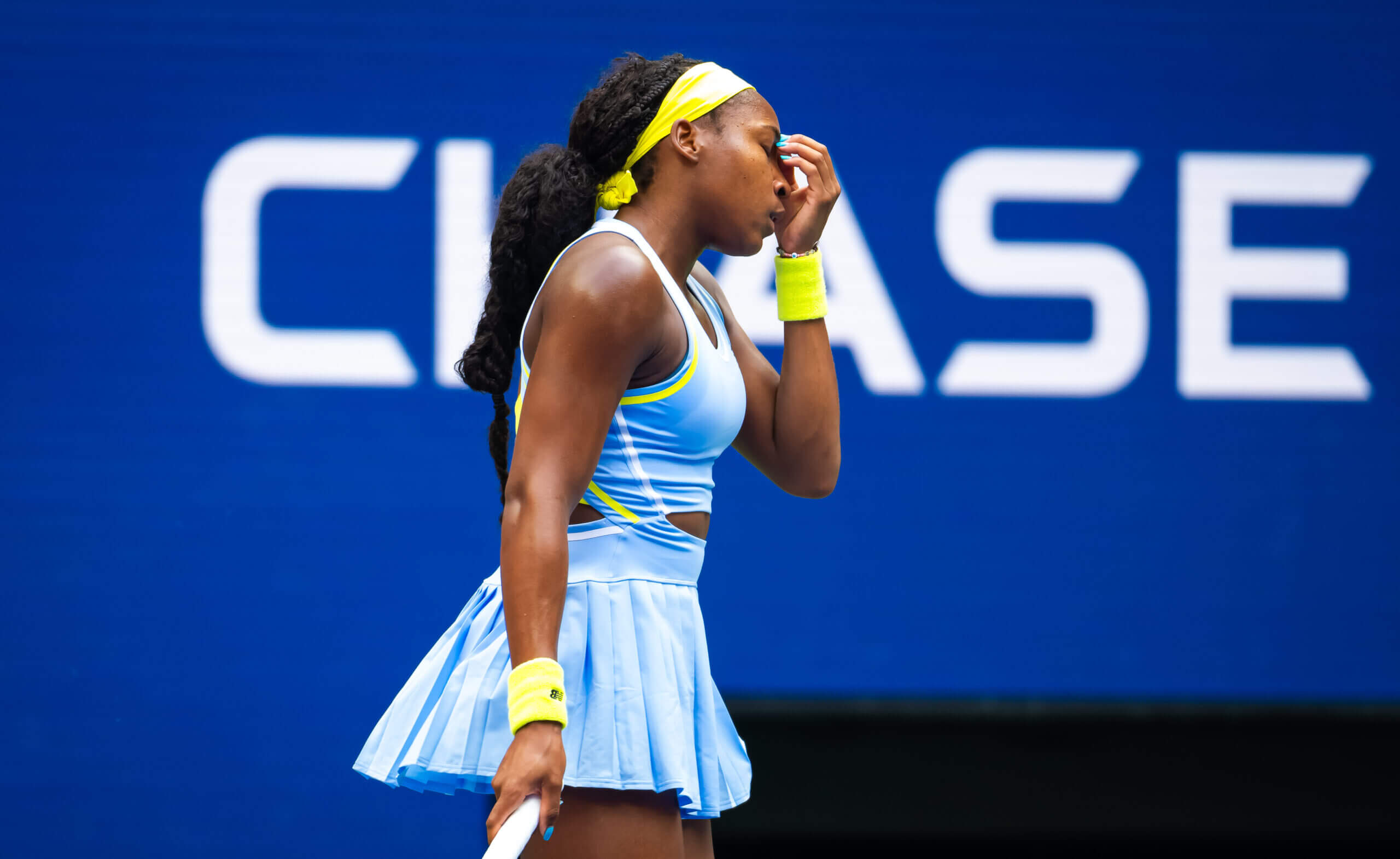
NEW YORK — For Coco Gauff, the biggest star in American tennis who took full ownership of the U.S. Open last year, a triumphant sequel just wasn’t on the cards.
Playing with all the flashes of brilliance, defiance and frustrating instability that have characterized her tennis all summer, Gauff fell Sunday afternoon to her compatriot Emma Navarro in three sets, ending her Grand Slam season without fulfilling her hopes of following up last year’s magical run with another trip to the winner’s circle.
For the second consecutive time in a major tournament, Navarro, Gauff’s Olympic teammate, used her increasingly dangerous combination of steadiness, speed and power to beat her, knocking the world No. 3 out 6-3, 4-6, 6-3.
Navarro, 23, born in New York and raised in South Carolina, is fast becoming a major force in tennis. She smothered the defending champion in front of Serena Williams, Stephen Colbert, Michael Che and nearly 24,000 fans in Arthur Ashe Stadium. Navarro faced down the occasion, and all its pressure and drama, and turned the match into an exercise in tennis simplicity. Navarro played clean. Her strokes, more fundamentally sound and reliable than Gauff’s high-wire act, were the deciding factor. She made it so.
Navarro, who has shot up the rankings in the last year, became NCAA champion with the Virginia Cavaliers. Now she is the No. 13 seed at her home Grand Slam and rising still, her weaknesses falling away with each passing month.
“It’s pretty insane,” Navarro said. “This is the city I was born in and it feels so special to be playing here.”
This was always going to be a rough matchup for Gauff, not least because of the inevitable scar tissue from the loss at Wimbledon in July. Gauff entered that match as favorite, not just to beat Navarro, but to get to the final. So many of the other top players had already fallen.
Then Navarro appeared across the net, doing what she has done pretty much all year. She ran down ball after ball, extending rallies and simply refusing to miss, hanging in there long enough for Gauff’s Achilles heels — the instability of her forehand and of her serve — to let her down.
On Sunday, she brought all that and more. Block returns of Gauff’s 120 mph serves went deep enough to send her backpedaling. Stab returns of seeming winners stole points. And on a warm, still and humid afternoon, she proved that her fitness is equal to that of Gauff, who is known as just about the fittest player in the sport.
Gauff didn’t help herself, double-faulting 19 times, often in key moments. Two double faults gave Navarro a service break in the first set, and another midway through the second brought Navarro another break point. When she caught up with a Gauff drop shot, and looped a forehand down the line for a winner, it looked to be the end.
Then came the wobble.
Two ugly service games, filled with wild forehands and tentative shot-making, gave Gauff a second life when all had seemed lost. She put her finger to her ear to get some more noise when she got the first service break, asking the crowd that had willed her to a trophy 12 months ago to do it all again.
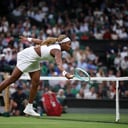
GO DEEPER
Old friends know best: Why Coco Gauff will be least surprised at defeat to Emma Navarro
It was a risky move against a friend, compatriot and Olympic teammate, but she needed all the help she could get. And she certainly didn’t try to quiet anyone down when she drew even and the stadium exploded for her.
“It was tough losing the second set. I had chances,” Navarro said.
The reprieve for Gauff was indeed brief. A slew of double faults, including two to give Navarro the early service break in the deciding set, stalled her momentum and doomed her. Navarro cleaned up her act and found new life in her legs. This time, she didn’t let the good fortune of Gauff’s gifts slide off her racket.
After Gauff’s second double fault of the final game brought Navarro within two points of the finish line, she turned her head to her box and nodded.
Two points later, she showed the athleticism and instinct that has caught most of the pro tour off guard this year by dropping into a split, nearly sitting on the court to rocket a backhand return down the line. When Gauff’s forehand sailed long and wide, Navarro was headed into her second Grand Slam quarterfinal, where she will face Paula Badosa of Spain. Badosa, a former world No. 2, is suddenly running hot after managing a back injury for much of the past year.
“Coco’s an amazing player. I know she’s going to come back and win this thing again one year,” Navarro said.
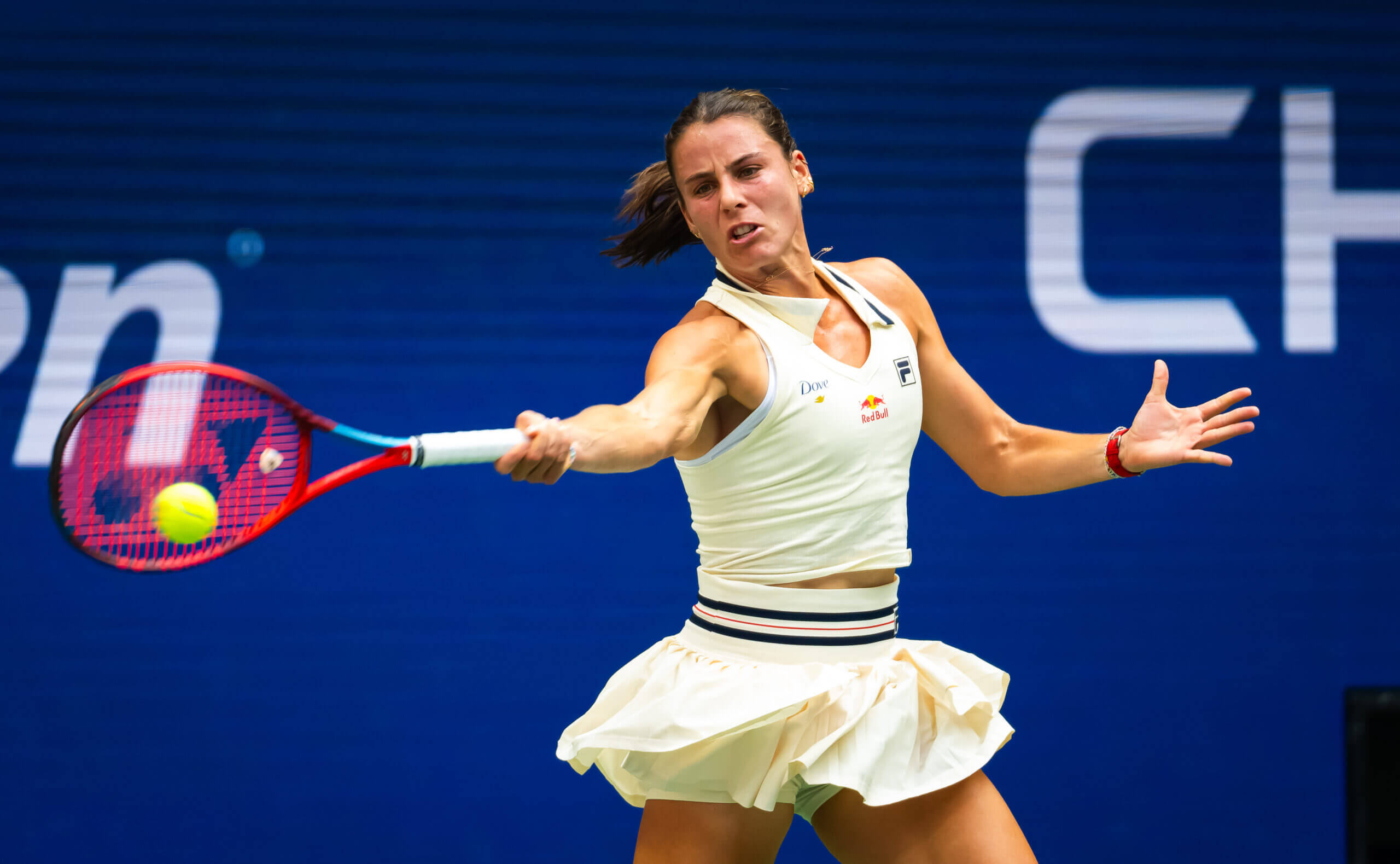
Emma Navarro’s rock-solid game was too much for Coco Gauff in Arthur Ashe Stadium. (Robert Prange / Getty Images)
For Gauff, the loss is the latest in a disappointing summer that began with a semifinal defeat to the world No. 1, Iga Swiatek, at the French Open. For months before that, going back to August of 2023, before she fell to the ground in triumph in this stadium, she had been one of the more bankable players in the game. She hadn’t cured herself of her weaknesses, but she’d found some ways to hide them, playing safer, high-arcing forehands to make her points longer and her matches more physical.
She started pulling her toss further back on her serve, trying not to charge into the court.
Since that loss to Swiatek, opponents have found ways to combat her new strategies. The shakiness in her game that those strategies steadied has reappeared. Gauff has been making early exits, for her anyway; in some losses, the mounting tension between her and her lead coach, Brad Gilbert, has been impossible to miss.
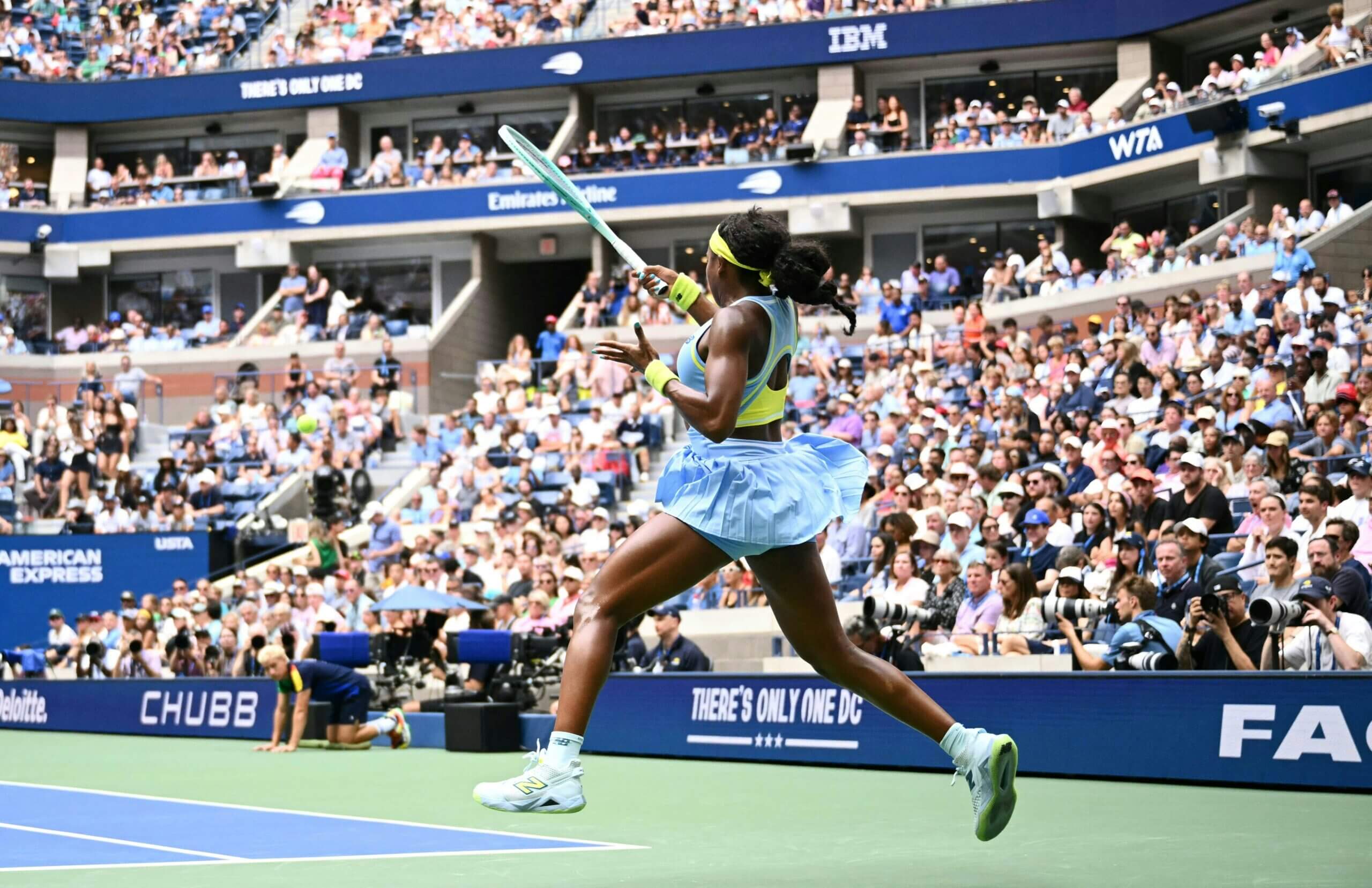
Coco Gauff’s forehand broke down under pressure from Emma Navarro’s flowing groundstrokes. (Angela Weiss / AFP via Getty Images)
In the loss to Navarro at Wimbledon, Gauff pleaded with Gilbert to give her some plan to stave off the inevitable. In a win earlier this week, she chided Gilbert and everyone else in the box to stop talking to her.
There was little visible tension between Gauff and her box Sunday. But long-lasting relationships between coaches and players have become increasingly rare.
For Navarro, this win is a new, firm data point to back up the longer-standing feeling that these two players will spend a lot of time together going forward, at the top of the rankings and in the late rounds of the biggest tournaments. Navarro is three years older than Gauff, but they have known each other, and been friendly, since their early years in junior tennis. Gauff was a prodigy then, playing two and three age-groups up, and Navarro was merely a normally gifted player.
Everything about them appears in contrast. Gauff is a product of the expanding Black middle class. Navarro is the daughter of a banker, and her family is among the wealthiest in the country.
Gauff was winning matches at Wimbledon at 15, beating Venus Williams in 2019.
Navarro went to college, a later bloomer thanks to her reputation as one of the hardest-working players in the game.
Navarro lost in the first round of the U.S. Open the past two years. Gauff was busy becoming a mainstay of the second week and of Arthur Ashe Stadium, where she cemented her position as a cultural icon by winning her maiden Grand Slam.
Navarro had never played on Ashe before Sunday, and the schedule didn’t allow her to warm up there beforehand. She had been on big courts before, including Centre Court at Wimbledon in July, but some of those moments had overwhelmed her.
Not Ashe, she said. She felt comfortable from her first moments out there even with the booming roars from the crowd.
“I had prepared myself for the worst, just in terms of feeling overwhelmed and nervous,” she said. “It’s a pretty crazy court. The energy in New York is unmatched.”
After Gauff’s win last year, she said a song had been playing in her head for days. Then she broke into the chorus of the Alicia Keys and Jay-Z collaboration, “Empire State of Mind.”
Moments after she and Navarro hugged at the net following the final point, and Gauff slung her bag over her shoulders for her slow, sad walk off the court, that song blasted out of the stadium loudspeakers.
A little while later Gauff gave plenty of credit to Navarro. She also acknowledged how much easier she had made it for her, especially with all those double faults. She said the problem involves dropping the left, or front, side of her body down too quickly as she brings her racket through the ball.
Something else she knows? There is something emotional blocking her from putting the ball in the box. On the practice court she can land 30 bombs in a row.
She wants help.
“I don’t want to lose matches like this anymore,” she said.
She knows other players would kill to have had the summer she did, making the last 16 at Wimbledon and the U.S. Open, and carrying her country’s flag during the opening ceremony at the Olympics.
“I’m wanting to reach a different level,” she said. “It is disappointing, but I’m not going to beat myself up and be, like, this was so bad. Yeah, I expect better, but at the end of the day it happened, and I know I can turn it around.”
She plans on getting to work on that in the coming months. There are some more tournaments to play but her priority is a solid training block, a rare event for top players who have to slog through the nearly 11-month season.
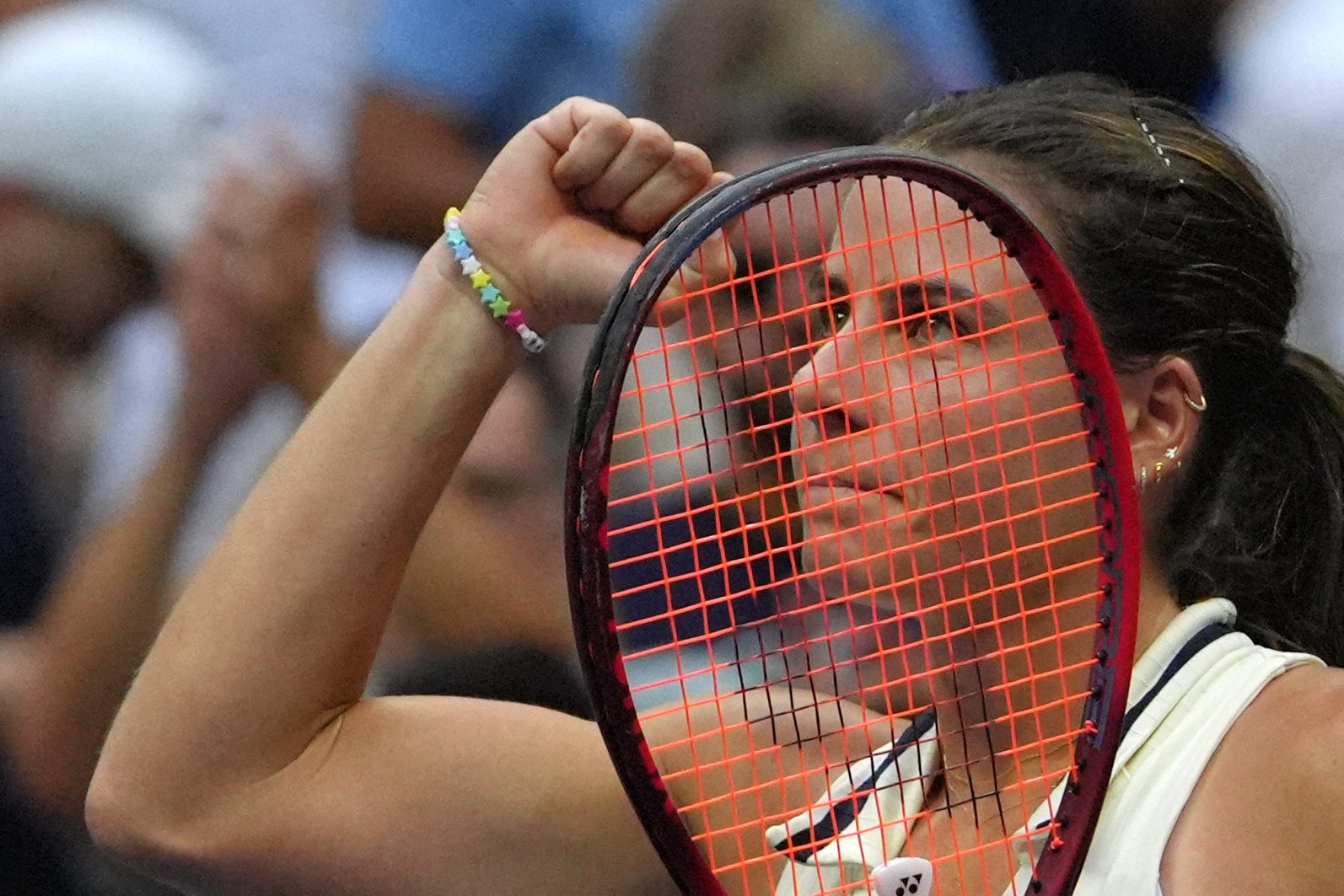
Emma Navarro recovered from a lull under the pressure of Arthur Ashe Stadium to play the solid tennis that would carry her to victory. (Timothy A. Clary / AFP via Getty Images)
Navarro isn’t thinking much about training blocks now, with a quarterfinal to play. It’s all come pretty fast, surpassing her expectations and those of so many others. A little more than two years ago, when she left college, she and her coach agreed to two years of tour tennis, no matter what. Then, they would evaluate where she was, what might be possible, and if it would be worth it.
Time expired on that deal in June. They didn’t even discuss it.
“I believe that I can play tennis with the best players in the world,” she said. “I deserve to be on this stage, and I belong in these rounds of Grand Slams.”
(Top photo: Robert Prange / Getty Images)